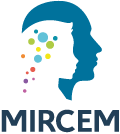Optic neuritis management in children
Uni- or bilateral pediatric optic neuritis is a recurrent disease if not common. It associates a decrease in visual acuity and headaches sometimes which are not very specific in children. The diagnosis requires a precise and urgent ophthalmological investigation that will specify the visual acuity, pupillary reflex, funduscopic examination, visual field and sometimes the vision of colors and visual evoked potentials. Once diagnosis is confirmed, the treatment is urgent as the functional risk is important (loss of visual acuity, of the vision of colors, of reliefs, in low brightness…). Corticosteroids pulses at 30 mg/kg/d (maximum dose of 1 g/d) will be instituted, for 3 days most of the time. Etiological assessment has to be performed at the same time including lumbar puncture and MRI orbits and brain (often the spinal cord) which would allow identification of post-infectious auto inflammatory neuritis, and neuro inflammatory diseases (multiple sclerosis, disease associated with specific antibodies, autoimmune diseases, etc.) that will require a specialized expertise to discuss a chronic treatment.
Cheuret E, Meyer P, Varenne F, Leboucq N, Biotti D, Deiva K. Prise en charge de la neuropathie optique inflammatoire de l’enfant. Journal de pédiatrie et de puériculture 34 (2021) 115-121.



